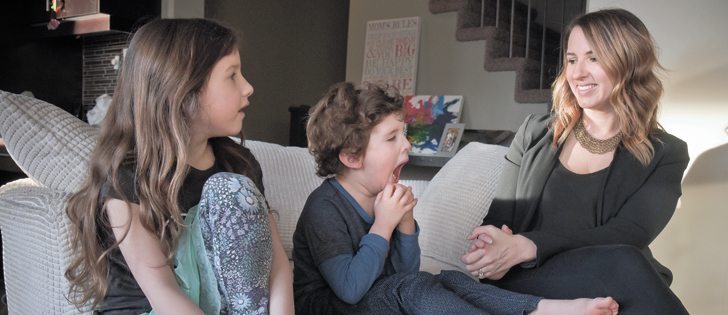It’s bedtime and the baby is crying. The toddler wants one more drink of water. The pre-schooler is worried about a monster under the bed. And the parents need sleep to prepare for another work day.
Sleep issues? Sleep consultant Amanda Hudye says they are becoming more prevalent.
The Saskatoon-based founder of SleepWell Baby works with children ages four months to eight years, and their parents, to address problems surrounding that simple and yet most prized activity — getting a good night’s sleep.
“Sleep deprivation and not getting enough sleep is an epidemic… across North America,” said Hudye.
Read Also

Rural Manitoba resources slim on natural disaster planning
A study from Brandon University’s Rural Development Institute has found that many rural and small municipalities don’t have the staff or resources to make formal climate plans against natural disaster.
“We really have to start focusing on our sleep, and sleep being a priority.”
A Canadian Pediatric Society study published in 2012 indicated difficulties getting to sleep and staying asleep are experienced by 15 to 25 percent of children and adolescents.
In a more recent study, 30 percent of parents said they have used over-the-counter medications to help their kids sleep. Many of these contain melatonin, which Health Canada considers a natural ingredient.
However, the CPS noted there are few studies on the long-term effects of melatonin-based products on children and none on their use in babies.
“We do know that parents that are giving melatonin … it’s a Band-Aid approach. It’s not getting to the root of what’s going on,” said Hudye.
“We would never recommend melatonin, ever, because we focus on behavioural challenges.”
She has a list of tips to help parents help their children to sleep and one of the most important is to limit “screen time,” the children’s’ use of smartphones, tablets and other electronic devices.
The blue light emitted by such devices tends to discourage sleep.
“It’s very stimulating for us. It suppresses the secretion of melatonin, and melatonin is the hormone that our body naturally produces … to help us stay asleep through the night,” said Hudye.
“We know that blue light inhibits that production of melatonin so it’s harder for our kids to go to sleep and to stay asleep.”
She recommends shutting down the devices at least one hour before bedtime, and then encouraging slow-paced activities such as baths and bedtime stories before sleep is expected.
A second tip is to keep the bedroom dark, cool and quiet.
Hudye discourages the use of night lights but if one is required, it should be out of the child’s direct line of sight.
Machines producing white noise can be an aid to keep children asleep, but a fan or an air purifier that emits a steady sound can also be effective.
Hudye recommends establishing a bedtime routine so children know what is expected and in-stinctively prepare their bodies for sleep.
“Children really love consistency. They always push the boundaries but they love boundaries because that makes them feel very safe and secure.”
A routine also makes it easy for Grandma or the babysitter to step in when needed.
That shouldn’t include requests to check for any monsters under the bed, added Hudye. Compliance sends the wrong message.
“What we are doing is we are saying to the child, ‘yes, there very well may be a monster. Let me take a look.’ It’s really playing into their fear if we’re actually going and checking for something versus letting them know that everything is safe and that they’re safe and that it’s time for bed.”
Setting a routine also gets around requests for that extra glass of water or bedtime snack.
Hudye has a downloadable chart on her website that has one example of steps that can be taken leading up to sleep time; things like brushing teeth, bathing, putting on pajamas, reading or listening to music.
Limiting a child’s daytime naps in hopes that they will sleep better at night is not a good strategy, said Hudye. In fact, it can have the opposite effect because being over-tired can induce stress, and with it the production of the stress hormone called cortisol.
“It’s almost like a little shot of espresso. It kind of wakes them up and makes them wired.”
It will then take that child longer to settle and reduces the chances for a long, restorative sleep.
The busy lives of both parents and children contribute greatly to sleep issues, said Hudye.
“We are a society that is just go go go go go and activities are being scheduled later into the night when we should be at home having time together with the family.”
A good sleep regimen must be learned, she added. Children who don’t learn will often become adults with sleep issues or insomnia.
“It’s a vicious cycle. When we’re not sleeping, our kids aren’t sleeping. We need to be role models, positive role models. When we’re getting the sleep that we need, we’re able to thrive and not just survive and get by in our day.”
What about those people who claim to need only four hours of sleep?
Hudye said those people make up one to three percent of the population. That means “97 to 99 percent of us just can’t function on that amount of sleep.”
Sleepy time
How much sleep do children need? It varies by age but the Canadian Paediatric Society makes the following recommendations:
- Newborns (birth to 2 months): 16-18 hours per day, three to four hours at a time
- Babies (2 to 6 months): 14-16 hours
- Older babies (6 months to 1 year): 14 hours
- Toddlers (1 to 3 years): 10-13 hours
- Preschoolers (3 to 5 years): 10-12 hours
- School-aged children (5-10 years): 10-12 hours
Source: Canadian Paediatric Society
















